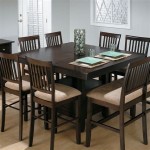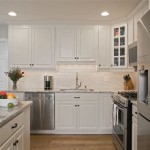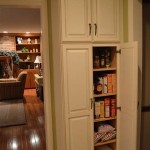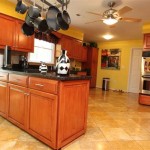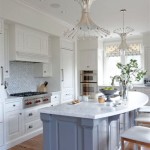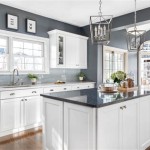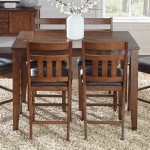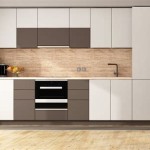Gray Paint Ideas for Kitchens: A Comprehensive Guide
Gray is an increasingly popular color choice for kitchens, offering a sophisticated alternative to brighter whites and warmer beiges. Its versatility allows it to complement a wide range of design styles, from modern minimalist to traditional farmhouse. Choosing the right gray paint, however, requires careful consideration of factors like undertones, light availability, and the existing elements within the kitchen space. This article explores a selection of gray paint ideas for kitchens, providing insights into selecting the perfect shade and incorporating it effectively into the overall design.
The perceived temperature of gray is determined by its undertones. Gray paints with blue or green undertones tend to appear cooler and more modern, while those with red or yellow undertones have a warmer, more inviting feel. Understanding these undertones is paramount to achieving the desired ambiance in the kitchen. Furthermore, the amount of natural light in the kitchen significantly impacts how a gray paint color will appear. A gray that looks cool in a brightly lit space might appear dull or even slightly purple in a room with limited natural light. Sample painting is crucial to observe how the color shifts under different lighting conditions throughout the day.
Understanding Undertones in Gray Paints
The subtle variations in gray paint are largely attributed to the undertones present within the color formula. These undertones influence the overall perception of the gray, dictating whether it leans towards a warmer or cooler shade. Identifying these undertones is essential for creating a harmonious color scheme within the kitchen.
Cool grays typically contain undertones of blue, green, or purple. These shades evoke a sense of tranquility and sophistication, often pairing well with stainless steel appliances and contemporary design elements. Examples of cool grays include those that are described as having a "smoky" or "misty" quality. They can complement kitchens with abundant natural light, creating a bright and airy feel. However, in kitchens with limited natural light, cool grays can appear cold or even slightly depressing. It is crucial to pair these grays with warm lighting and complementary accent colors to prevent a sterile atmosphere.
Warm grays, on the other hand, feature undertones of red, yellow, or brown. These shades provide a more inviting and comforting ambiance, making them suitable for traditional or farmhouse-style kitchens. Warm grays often pair well with wood cabinets, brass hardware, and natural stone countertops. They can create a cozy and welcoming space, particularly in kitchens that lack abundant natural light. However, it is important to avoid using warm grays in kitchens that already have warm-toned elements, as this can create an overly yellowish or brownish appearance.
Neutral grays are those that lack any discernible undertones. These shades offer a balanced and versatile option, working well with a variety of design styles. Neutral grays are particularly useful for those who prefer a minimalist or understated aesthetic. They can be paired with both warm and cool accent colors, providing a flexible backdrop for other design elements within the kitchen.
Beyond simply identifying the undertone, it’s helpful to compare paint swatches against white paper. This comparison helps isolate the underlying color. One can paint large samples and place them on different walls of the kitchen to observe shifts in color throughout the day, under varying light conditions. These steps help to ensure that the chosen gray complements the existing features and achieves the desired atmosphere.
Gray Paint Color Schemes for Kitchen Cabinets
Gray paint is an excellent choice for kitchen cabinets, providing a sophisticated and versatile backdrop for other design elements. When selecting a gray paint for cabinets, it’s essential to consider the existing countertops, flooring, and backsplash. A cohesive color scheme is critical to achieving a visually appealing and harmonious kitchen space.
For kitchens with white countertops and backsplashes, a darker gray can create a striking contrast, highlighting the brightness of the white elements. Conversely, a lighter gray can create a more subtle and understated effect. Pairing a dark gray with white quartz countertops featuring gray veining can create a cohesive and elegant look. Choosing hardware in a contrasting metal, such as polished nickel or brass, can add visual interest and prevent the space from feeling monotonous.
If the kitchen features wood countertops or flooring, a warm gray can complement the natural tones of the wood, creating a cozy and inviting atmosphere. Consider using a gray with yellow or brown undertones to enhance the warmth of the wood. Pair with brass or bronze hardware to further emphasize the warmth of the space. Avoid using cool grays in this scenario, as they can clash with the warm tones of the wood and create a discordant effect.
For kitchens with stainless steel appliances, a cool gray can create a modern and sleek aesthetic. Opt for a gray with blue or green undertones to complement the cool tones of the stainless steel. Pair with silver or chrome hardware to reinforce the modern feel. Avoid using overly warm grays, as they can make the stainless steel appear dull or outdated.
Two-tone cabinet schemes are also increasingly popular, involving painting upper and lower cabinets different shades of gray (or using gray in combination with another color). A darker gray can be used on lower cabinets to ground the space, while a lighter gray can be used on upper cabinets to create a sense of airiness. This allows visual impact and emphasizes the architecture of the room. Consider using a complementary accent color, such as blue or green, on the kitchen island or pantry doors to add a pop of color and visual interest.
Incorporating Gray into Kitchen Walls and Backsplashes
Beyond cabinets, gray can be effectively used on kitchen walls and backsplashes. When considering the color for walls, it's important to consider the size of the kitchen, the amount of natural light, and the overall style of the space. For backsplashes, gray tiles can provide texture and visual interest, while gray paint can offer a more subtle and seamless look.
In smaller kitchens, lighter shades of gray can create a sense of spaciousness and airiness. Opt for a light, neutral gray with minimal undertones to maximize the amount of light reflected in the room. Avoid using dark grays in small kitchens, as they can make the space feel cramped and enclosed. Consider using a high-gloss paint finish to further enhance light reflection.
In larger kitchens, darker grays can be used to create a more dramatic and sophisticated effect. Choose a deep charcoal gray or a slate gray to add depth and dimension to the space. Pair with light-colored cabinets and countertops to create a balanced and visually appealing contrast. Consider using a matte or eggshell paint finish to create a soft and velvety texture.
Gray backsplashes offer a variety of options. Gray subway tiles are a classic choice, providing a timeless and versatile look. Consider using different shades of gray in a pattern, such as a herringbone or chevron, to add visual interest. Gray glass tiles can create a sleek and modern look, while gray stone tiles can add texture and a natural element to the space. When selecting a gray backsplash, consider the color of the countertops and cabinets to ensure a cohesive and harmonious design.
Using a light gray paint on the walls and a darker shade of gray on the backsplash is one way to add subtle depth. This can visually separate the spaces without making the kitchen feel smaller. Adding pops of color through accessories, such as artwork, dishware, or kitchen towels, can further enhance the visual appeal of the space. This creates a dynamic visual landscape, allowing the gray background to recede and enhance brighter colors.
Ultimately, selecting the right gray paint for a kitchen involves careful consideration of the elements already present, the desired ambiance, and the available light. Sampling, analyzing undertones, and considering the impact of varying lighting are important steps in ensuring a successful result. This will lead to a functional and aesthetically pleasing kitchen.

Sherwin Williams Best Kitchen Paint Colors Twilight Gray By Cynthia Ramsey Grey Walls Design Small Home Kitchens

Cooking With Color When To Use Gray In The Kitchen

Great Gray Kitchen Ideas When Redesigning Your Home Aco

Colors To Fall In Love With Https Www Pinterest Com Pin Abvjxqrjjjy9xqkndeutxcwbijp Mqoudlznvpcgdp1dy Lüks Mutfaklar Modern Mutfak Tasarımı Iç Tasarım

80 Home Design Ideas And Photos Bunch An Interior Luxury Homes Blog White Cabinetry Cheap Kitchen Cabinets

The 6 Best Gray Paint Colors For Cabinets

Dark Grey Kitchen Home Bunch Interior Design Ideas

These Gray Kitchen Cabinets Offer A Neutral Twist Bob Vila

Favorite Kitchen Cabinet Paint Colors

Grey Kitchen Inspiration For 2024 Home Bunch Interior Design Ideas

